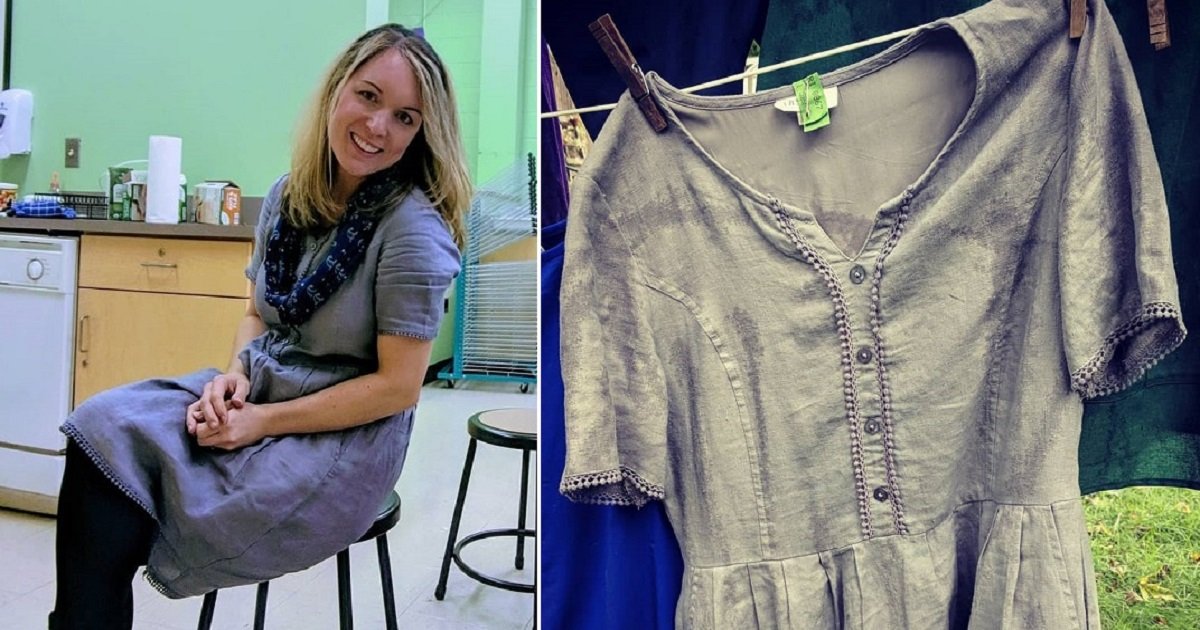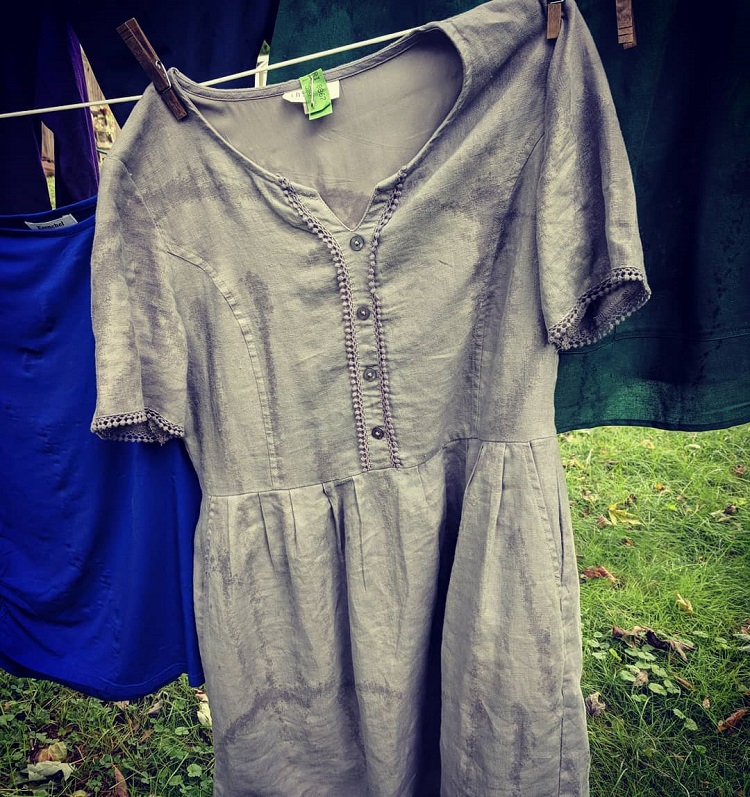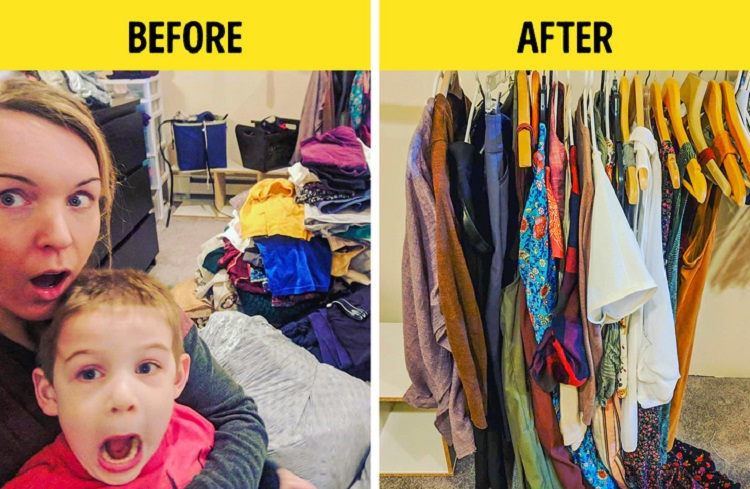Watch the video to find out why the teacher wore the same dress for 100 days!
Video credit: Good Morning America
You’re running late for work but when you throw open your wardrobe, you’re stumped. “Ugh, I have nothing to wear again,” may be your refrain but what you may not realize is the pile of clothes on the side that you only wore once or twice. And that’s a problem.
According to some reports, consumers purchased 60 percent more clothing in 2014 compared to 2000 but only kept each garment for half as long.
Julia Mooney, who is an art teacher from New Jersey, was shocked at how wasteful fast fashion behavior was and how it was negatively affecting society and the environment. But instead of just complaining about it online, she actually decided to do something about it in a way that would encourage others to do the same.
At the beginning of August 2018, Julia posted on Instagram that she would challenge herself by wearing the same dress for 100 days. Anticipating possible reactions, she covered some potential issues from the start.
“Disgusting? Well, it gets washed! Boring? Sure. I love to express myself through what I wear as much as the next American.” She added that she could patch any tears just like people did in the old days. She also planned to use an apron at work to avoid paint stains.
Julia was partly motivated by a desire for simplicity. With two kids who needed to be ready by 6:30 in the morning, not agonizing over what to wear made life so much easier for her. It also saved her space because with less stuff, the fewer closets she needed. This could be a core issue for families who only have so much floor space.
When she also explained her decision to her daughter, she made sure to touch on the social issue.
With a huge demand for clothes at cheap prices, many companies move their production to foreign countries where workers can be abused. For instance, evidence shows that some countries utilize forced labor and child labor in the fashion industry.
Some workers also receive wages that are 3.5 times lower than what they need for a “decent life with basic facilities.”
Fast fashion creates a situation where the whole production infrastructure prioritizes profits over the welfare of people. But it not only affects people but the environment as well.
For example, producing one pair of jeans generates the same amount of greenhouse gases as a car that’s driven for 70 miles. And to make a single cotton T-shirt, 2,700 liters of water are needed. That’s enough to satisfy the average person’s drinking needs for the next 3 to 3.5 years.
What makes it worse is that sometimes we buy clothes that we’re not even sure we’re going to wear. By being educated about the facts, we can hopefully avoid such a situation.
Julia encourages us to stop and think before entering into the “buy, wear, discard, and buy again” cycle.
She asks us not to define people by what they’re wearing but rather by what they’re doing. The 100-day challenge isn’t meant to force people to keep wearing the same clothes over and over again but to show that we don’t need as many clothes as we think we do.
Be good instead of trying to look good.
While Julia’s challenge is long over (she does change clothes every day now), she has managed to significantly shrink her closet and maintains a sustainable fashion approach.
She is still spreading her message, though, and encourages others to give this new fashion trend a try. If you want to participate, simply use the #OneOutfit100Days hashtag.
Recommended Video!
“Homeless Man Shivering On Subway, Then One Stranger Comes Over And Gives Him His Clothes”





